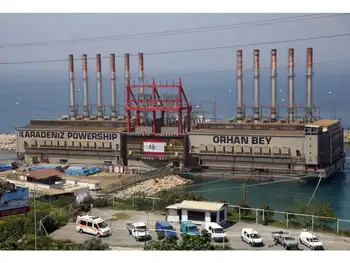Owners threaten to shut down New Jersey plant
By Associated Press
CSA Z463 Electrical Maintenance -
Our customized live online or in‑person group training can be delivered to your staff at your location.

- Live Online
- 6 hours Instructor-led
- Group Training Available
Exelon Corp. says the $800 million it would cost to build the towers is more than the 40-year-old Oyster Creek Nuclear Generating Station is worth, and wants the state to withdraw its demand.
But environmentalists say the job could be done for about $200 million.
In January, the state Environmental Protection Department required the plant to build one or more "closed-cycle" cooling towers instead of relying on water drawn from the Oyster Creek in Lacey Township to cool the reactor.
The state says that process kills billions of shrimp and tens of thousands of fish, crabs and clams each year.
But the suburban Chicago-based Exelon insists the new technology would force it to shut down the reactor, which last year received a new 20-year license extension.
"This is not a bluff, not at all," said plant spokesman David Benson. "The cost of the cooling towers outweighs what Oyster Creek is worth."
Environmental groups are not convinced.
"I think it's all bluff and bluster," said Jeff Tittel, president of the New Jersey chapter of the Sierra Club. "Exelon is like a spoiled child stamping its feet because it's not getting what it wants. They're saying they're going to take their ball and go home if they have to do what the state says they have to do."
The financial stakes are high. Exelon says the plant generates $129 million in economic activity in the state. It estimates the plant saves New Jerseyans another $190 million a year in reduced electricity costs.
With 700 jobs, it is the dominant employer in an area of small bungalows, marinas and boat-related businesses in the sandy Pinelands region. It also pays more than $10 million a year in local and state taxes.
Located about 60 miles east of Philadelphia and 75 miles south of New York City, Oyster Creek generates 636 megawatts of electricity, enough to power 600,000 homes a year, and provides 9 percent of New Jersey's electricity.
But environmental groups say the plant is contributing to the rapid decline of Barnegat Bay — a centerpiece of the local tourism and recreational economy. The water coming out of the plant's discharge canal is about 10 degrees warmer than when it entered, and they claim it is altering the fragile ecosystem of the bay.
That has led to algae blooms that kill off marine life by reducing oxygen in the water, and contribute to increased jellyfish populations that discourage people from swimming in the bay and its many tributaries, environmentalists say.
But an even more immediate impact is seen at the plant itself, where vast amounts of marine life including fish and crab eggs, larvae and small animals are killed by getting sucked into the plant, or trapped against screening gates. The environmental group Save Barnegat Bay estimates the plant kills nearly 3 percent of the bay's marine life each day — an assertion Exelon disputes.
Exelon says cooling tower projects elsewhere in the country are proving to be expensive.
The Brayton Point Generating Station in Massachusetts is building a cooling tower system for $620 million. In 2003, Entergy, which owns the Indian Point Energy Center in Buchanan, N.Y. just outside New York City, estimated it would cost $740 million to build cooling towers there. And Pacific Electric & Gas pegged the cost of cooling towers at its Diablo Canyon Power Plant in Avila Beach, Cal. at $2 billion per tower.
Cost aside, Exelon says cooling towers would create their own problems, including air pollution, noise and even the possibility of creating fog in the area. It also claims there is nowhere on the plant's grounds to put the cooling towers.
The Nine Mile Point Nuclear Generating Station near Oswego, N.Y., went online December 1, 1969, the same day as Oyster Creek. But Oyster Creek's original license was granted first, technically making it the oldest of the nation's 104 commercial nuclear reactors that are still operating.











